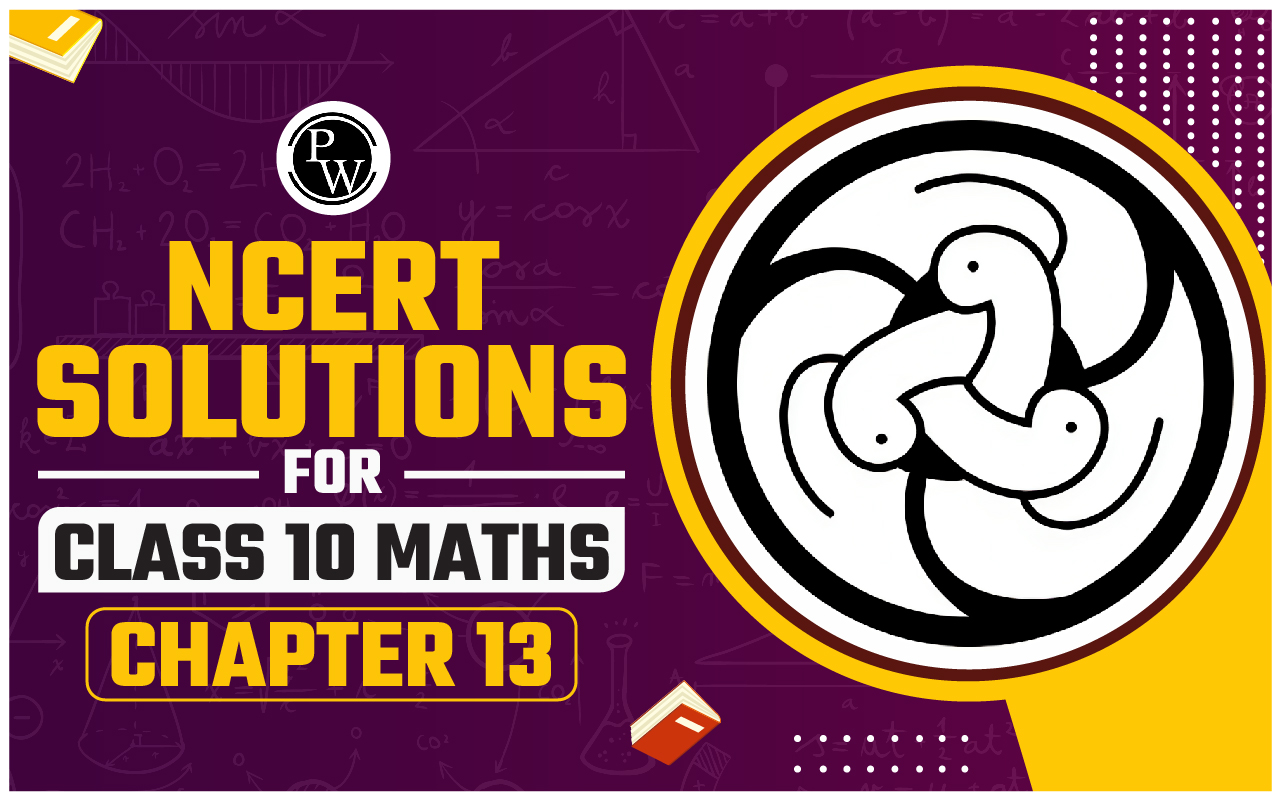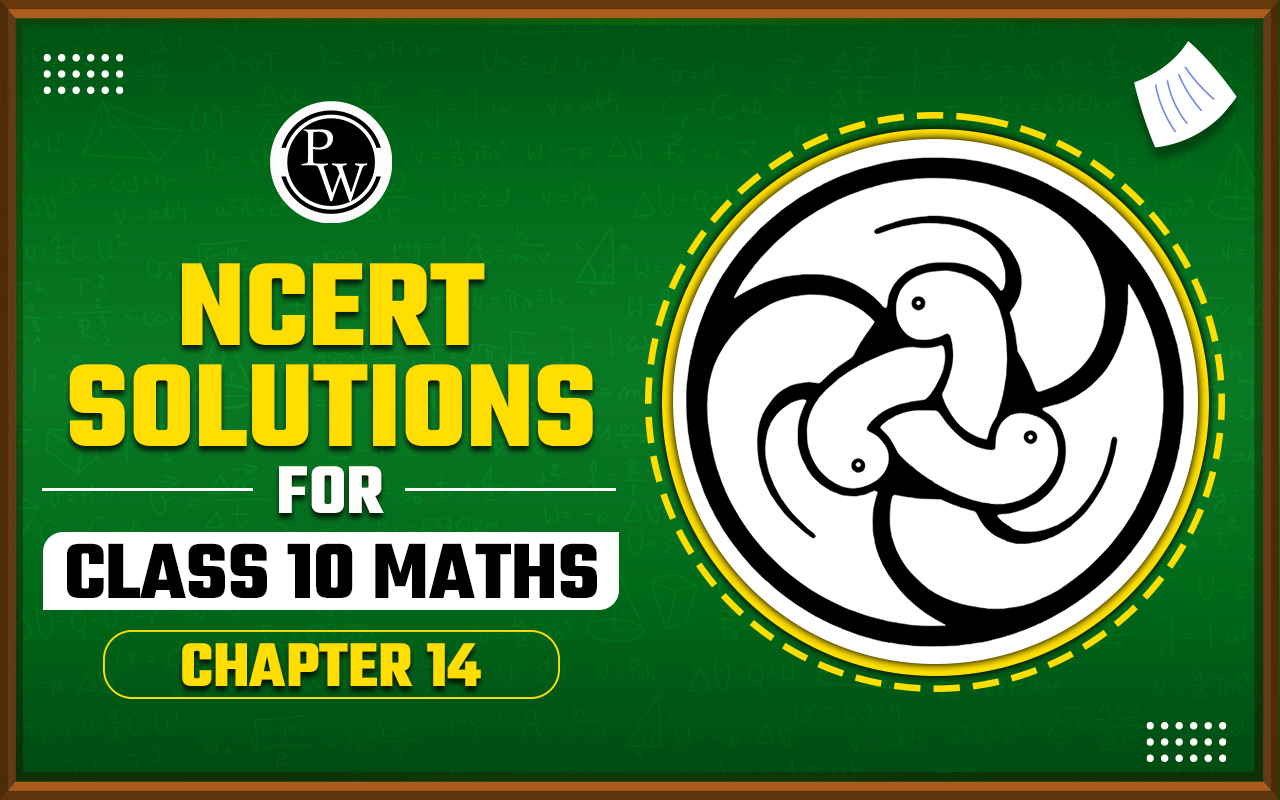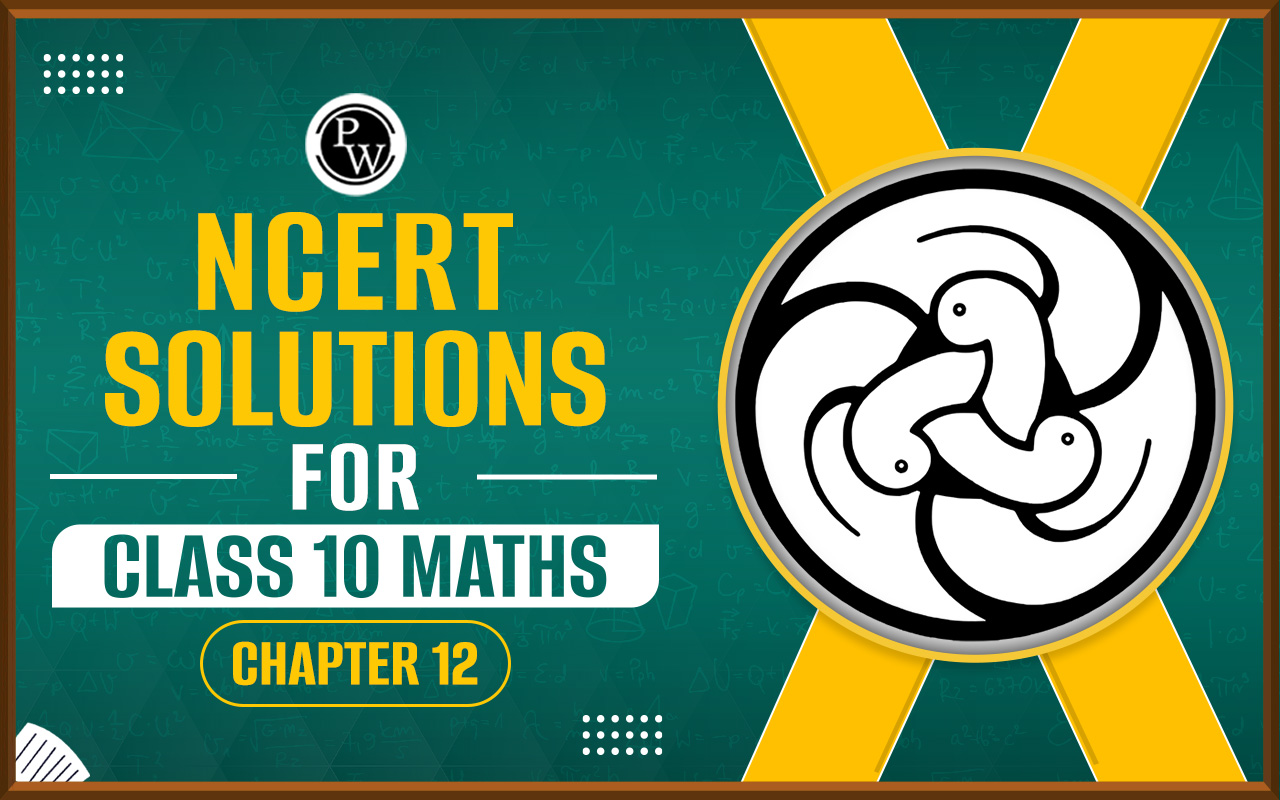

ICSE Class 10 Maths Selina Solutions Chapter 17: A circle is the location of a point that moves in a plane so that it always stays the same distance from a fixed point in the same plane. Students will study cyclic properties, fundamental circle types and components, as well as several significant theorems and findings, in this ICSE Class 10 Maths Selina Solutions Chapter 17.
Students can use the ICSE Class 10 Maths Selina Solutions Chapter 17, which have been produced by knowledgeable instructors, to gain a comprehensive understanding of concepts and problem-solving strategies. Students would feel more confident to sit their ICSE Class 10 Maths Selina Solutions Chapter 17.ICSE Class 10 Maths Selina Solutions Chapter 17 Overview
ICSE Class 10 Maths Selina Solutions Chapter 17 on Circles offer comprehensive guidance and clarity on all topics related to circles. Designed to support students in their understanding and exam preparation, these ICSE Class 10 Maths Selina Solutions Chapter 17 provide step-by-step explanations for solving problems. ICSE Class 10 Maths Selina Solutions Chapter 17 provides concepts such as tangent and secant properties, angle subtended by an arc, cyclic quadrilaterals, and more. With a focus on accuracy and detailed reasoning, ICSE Class 10 Maths Selina Solutions Chapter 17 help students build confidence in tackling circle-related problems effectively. Whether for homework, self-study, or exam revision, these ICSE Class 10 Maths Selina Solutions Chapter 17 serve as a valuable resource to enhance learning outcomes in ICSE Class 10 Mathematics.ICSE Class 10 Maths Selina Solutions Chapter 17 PDF
Below we have provided ICSE Class 10 Maths Selina Solutions Chapter 17 in detail. This chapter will help you to clear all your doubts regarding the chapter Inequalities. Students are advised to prepare from these ICSE Class 10 Maths Selina Solutions Chapter 17 before the examinations to perform better.ICSE Class 10 Maths Selina Solutions Chapter 17 PDF
ICSE Class 10 Maths Selina Solutions Chapter 17 Exercise 17.A
Below we have provided ICSE Class 10 Maths Selina Solutions Chapter 17. Students are advised to thoroughly practice these ICSE Class 10 Maths Selina Solutions Chapter 17 -1. In the given figure, O is the center of the circle. ∠OAB and ∠OCB are 30 o and 40 o respectively. Find ∠AOC Show your steps of working.
Solution:
Firstly, let’s join AC. And, let ∠OAC = ∠OCA = x [Angles opposite to equal sides are equal] So, ∠AOC = 180 o – 2x Also, ∠BAC = 30 o + x ∠BCA = 40 o + x Now, in ∆ABC ∠ABC = 180 o – ∠BAC – ∠BCA [Angles sum property of a triangle] = 180 o – (30 o + x) – (40 o + x) = 110 o – 2x And, ∠AOC = 2∠ABC [Angle at the center is double the angle at the circumference subtend by the same chord] 180 o – 2x = 2(110 o – 2x) 2x = 40 o x = 20 o Thus, ∠AOC = 180 o – 2×20 o = 140 o2. In the given figure, ∠BAD = 65°, ∠ABD = 70°, ∠BDC = 45°
(i) Prove that AC is a diameter of the circle.
(ii) Find ∠ACB.
Solution:
(i) In ∆ABD, ∠DAB + ∠ABD + ∠ADB = 180 o 65 o + 70 o + ∠ADB = 180 o 135 o + ∠ADB = 180 o ∠ADB = 180 o – 135 o = 45 o Now, ∠ADC = ∠ADB + ∠BDC = 45 o + 45 o = 90 o As ∠ADC is the angle of semi-circle for AC as the diameter of the circle. (ii) ∠ACB = ∠ADB [Angles in the same segment of a circle] Hence, ∠ACB = 45 o3. Given O is the centre of the circle and ∠AOB = 70 o .
Calculate the value of:
(i) ∠OCA,
(ii) ∠OAC.
Solution:
Here, ∠AOB = 2∠ACB [Angle at the center is double the angle at the circumference subtend by the same chord] ∠ACB = 70 o / 2 = 35 o Now, OC = OA [Radii of same circle] Thus, ∠OCA = ∠OAC = 35 o4. In each of the following figures, O is the centre of the circle. Find the values of a, b and c.
Solution:
(i) Here, b = ½ x 130 o [Angle at the center is double the angle at the circumference subtend by the same chord] Thus, b = 65 o Now, a + b = 180 o [Opposite angles of a cyclic quadrilateral are supplementary] a = 180 o – 65 o = 115 o (ii) Here, c = ½ x Reflex (112 o ) [Angle at the center is double the angle at the circumference subtend by the same chord] Thus, c = ½ x (360 o – 112 o ) = 124 o5. In each of the following figures, O is the center of the circle. Find the values of a, b, c and d.
Solution:
(i) Here, ∠BAD = 90 o [Angle in a semi-circle] So, ∠BDA = 90 o – 35 o = 55 o And, a = ∠ACB = ∠BDA = 55 o [Angles subtended by the same chord on the circle are equal] (ii) Here, ∠DAC = ∠CBD = 25 o [Angles subtended by the same chord on the circle are equal] And, we have 120 o = b + 25 o [Exterior angle property of a triangle] b = 95 o (iii) ∠AOB = 2∠AOB = 2 x 50 o = 100 o [Angle at the center is double the angle at the circumference subtend by the same chord] Also, OA = OB ∠OBA = ∠OAB = c c = (180 o – 100 o )/ 2 = 40 o (iv) We have, ∠APB = 90 o [Angle in a semicircle] ∠BAP = 90 o – 45 o = 45 o Now, d = ∠BCP = ∠BAP = 45 o [Angles subtended by the same chord on the circle are equal]6. In the figure, AB is common chord of the two circles. If AC and AD are diameters; prove that D, B and C are in a straight line. O 1 and O 2 are the centers of two circles.
Solution:
It’s seen that, ∠DBA = ∠CBA = 90 o [Angle in a semi-circle is a right angle] So, adding both ∠DBA + ∠CBA = 180 o Thus, DBC is a straight line i.e. D, B and C form a straight line.below, find:
(i) ∠BCD,
(ii) ∠ADC,
(iii) ∠ABC.
Show steps of your working.
Solution:
From the given fig, it’s seen that In cyclic quadrilateral ABCD, DC || AB And given, ∠DAB = 105 o (i) So, ∠BCD = 180 o – 105 o = 75 o [Sum of opposite angles in a cyclic quadrilateral is 180 o ] (ii) Now, ∠ADC and ∠DAB are corresponding angles. So, ∠ADC + ∠DAB = 180 o ∠ADC = 180 o – 105 o Thus, ∠ADC = 75 o (iii) We know that, the sum of angles in a quadrilateral is 360 o So, ∠ADC + ∠DAB +∠BCD + ∠ABC = 360 o 75 o + 105 o + 75 o + ∠ABC = 360 o ∠ABC = 360 o – 255 o Thus, ∠ABC = 105 o8. In the figure, given below, O is the centre of the circle. If ∠AOB = 140 o and ∠OAC = 50 o ;
(i) ∠ACB,
(ii) ∠OBC,
(iii) ∠OAB,
(iv) ∠CBA.
Solution:
Given, ∠AOB = 140 o and ∠OAC = 50 o (i) Now, ∠ACB = ½ Reflex (∠AOB) = ½ (360 o – 140 o ) = 110 o [Angle at the center is double the angle at the circumference subtend by the same chord] (ii) In quadrilateral OBCA, ∠OBC + ∠ACB + ∠OCA + ∠AOB = 360 o [Angle sum property of a quadrilateral] ∠OBC + 110 o + 50 o + 140 o = 360 o = 60 o (iii) In ∆AOB, we have OA = OB (radii) So, ∠OBA = ∠OAB Hence, by angle sum property of a triangle ∠OBA + ∠OAB + ∠AOB = 180 o 2∠OBA + 140 o = 180 o 2∠OBA = 40 o ∠OBA = 20 o (iv) We already found, ∠OBC = 60 o And, ∠OBC = ∠CBA + ∠OBA 60 o = ∠CBA + 20 o Therefore, ∠CBA = 40 o(i) ∠CDB,
(ii) ∠ABC,
(iii) ∠ACB.
Solution:
Here, we have ∠CDB = ∠BAC = 49 o ∠ABC = ∠ADC = 43 o [Angles subtended by the same chord on the circle are equal] Now, by angle sum property of a triangle we have ∠ACB = 180 o – 49 o – 43 o = 88 o10. In the figure given below, ABCD is a cyclic quadrilateral in which ∠BAD = 75 o ; ∠ABD = 58 o and ∠ADC = 77 o .
Find:
(i) ∠BDC,
(ii) ∠BCD,
(iii) ∠BCA.
Solution:
(i) By angle sum property of triangle ABD, ∠ADB = 180 o – 75 o – 58 o = 47 o Thus, ∠BDC = ∠ADC – ∠ADB = 77 o – 47 o = 30 o (ii) ∠BAD + ∠BCD = 180 o [Sum of opposite angles of a cyclic quadrilateral is 180 o ] Thus, ∠BCD = 180 o – 75 o = 105 o (iii) ∠BCA = ∠ADB = 47 o [Angles subtended by the same chord on the circle are equal]11. In the figure given below, O is the centre of the circle and triangle ABC is equilateral.
Find:
(i) ∠ADB, (ii) ∠AEB
Solution:
(i) As, it’s seen that ∠ACB and ∠ADB are in the same segment,
So, ∠ADB = ∠ACB = 60 o (ii) Now, join OA and OB. And, we have ∠AEB = ½ Reflex (∠AOB) = ½ (360 o – 120 o ) = 120 o [Angle at the center is double the angle at the circumference subtend by the same chord]12. Given: ∠CAB = 75 o and ∠CBA = 50 o . Find the value of ∠DAB + ∠ABD.
Solution:
Given, ∠CAB = 75 o and ∠CBA = 50 o In ∆ABC, by angle sum property we have ∠ACB = 180 o – (∠CBA + ∠CAB) = 180 o – (50 o + 75 o ) = 180 o – 125 o = 55 o And, ∠ADB = ∠ACB = 55 o [Angles subtended by the same chord on the circle are equal] Now, taking ∆ABD ∠DAB + ∠ABD + ∠ADB = 180 o ∠DAB + ∠ABD + 55 o = 180 o ∠DAB + ∠ABD = 180 o – 55 o ∠DAB + ∠ABD = 125 o13. ABCD is a cyclic quadrilateral in a circle with centre O. If ∠ADC = 130 o , find ∠BAC.
Solution:
From the fig. its seem that, ∠ACB = 90 o [Angle in a semi-circle is 90 o ] Also, ∠ABC = 180 o – ∠ADC = 180 o – 130 o = 50 o [Pair of opposite angles in a cyclic quadrilateral are supplementary] By angle sum property of the right triangle ACB, we have ∠BAC = 90 o – ∠ABC = 90 o – 50 o Thus, ∠BAC = 40 o14. In the figure given alongside, AOB is a diameter of the circle and ∠AOC = 110 o , find ∠BDC.
Solution:
Let’s join AD first. So, we have ∠ADC = ½ ∠AOC = ½ x 110 o = 55 o [Angle at the centre is double the angle at the circumference subtended by the same chord] Also, we know that ∠ADB = 90 o [Angle in the semi-circle is a right angle] Therefore, ∠BDC = 90 o – ∠ADC = 90 o – 55 o ∠BDC = 35 o15. In the following figure, O is the centre of the circle; ∠ AOB = 60 o and ∠ BDC = 100 o , find ∠OBC.
Solution:
Form the figure, we have ∠ACB = ½ ∠AOB = ½ x 60 o = 30 o[Angle at the centre is double the angle at the circumference subtended by the same chord]
Now, by applying angle sum property in ∆BDC, ∠DBC = 180 o – 100 o – 30 o = 50 o Therefore, ∠OBC = 50 o16. In ABCD is a cyclic quadrilateral in which ∠DAC = 27 o , ∠DBA = 50 o and ∠ADB = 33 o . Calculate (i) ∠DBC, (ii) ∠DCB, (iii) ∠CAB.
(i) It’s seen that, ∠DBC = ∠DAC = 27 o [Angles subtended by the same chord on the circle are equal] (ii) It’s seen that, ∠ACB = ∠ADB = 33 o And, ∠ACD = ∠ABD = 50 o [Angles subtended by the same chord on the circle are equal] Thus, ∠DCB = ∠ACD + ∠ACB = 50 o + 33 o = 83 o (iii) In quad. ABCD, ∠DAB + ∠DCB = 180 o 27 o + ∠CAB + 83 o = 180 o Thus, ∠CAB = 180 o – 110 o = 70 o17. In the figure given alongside, AB and CD are straight lines through the centre O of a circle. If ∠AOC = 80 o and ∠CDE = 40 o . Find the number of degrees in: (i) ∠DCE; (ii) ∠ABC.
Solution:
(i) Form the fig. its seen that, ∠DCE = 90 o – ∠CDE = 90 o – 40 o = 50 o Therefore, ∠DEC = ∠OCB = 50 o (ii) In ∆BOC, we have ∠AOC = ∠OCB + ∠OBC [Exterior angle property of a triangle] ∠OBC = 80 o – 50 o = 30 o [ Given ∠AOC = 80 o ] Therefore, ∠ABC = 30 o18. In the figure given below, AC is a diameter of a circle, whose centre is O. A circle is described on AO as diameter. AE, a chord of the larger circle, intersects the smaller circle at B. Prove that AB = BE.
Solution:
Firstly, join OB. Then, ∠OBA = 90 o [Angle in a semi-circle is a right angle] That is, OB is perpendicular to AE. Now, we know that the perpendicular draw from the centre to a chord bisects the chord. Therefore, AB = BE19. (a) In the following figure,
(i) if ∠BAD = 96 o , find ∠BCD and ∠BFE.
(ii) Prove that AD is parallel to FE.
(b) ABCD is a parallelogram. A circle
Solution:
(i) ABCD is a cyclic quadrilateral So, ∠BAD + ∠BCD = 180 o [Pair of opposite angles in a cyclic quadrilateral are supplementary] ∠BCD = 180 o – 96 o = 84 o And, ∠BCE = 180 o – 84 o = 96 o [Linear pair of angles] Similarly, BCEF is a cyclic quadrilateral So, ∠BCE + ∠BFE = 180 o [Pair of opposite angles in a cyclic quadrilateral are supplementary] ∠BFE = 180 o – 96 o = 84 o (ii) Now, ∠BAD + ∠BFE = 96 o + 84 o = 180 o But these two are interior angles on the same side of a pair of lines AD and FE. Therefore, AD || FE.20. Prove that:
(i) the parallelogram, inscribed in a circle, is a rectangle.
(ii) the rhombus, inscribed in a circle, is a square.
Solution:
(i) Let’s assume that ABCD is a parallelogram which is inscribed in a circle. So, we have ∠BAD = ∠BCD [Opposite angles of a parallelogram are equal] And ∠BAD + ∠BCD = 180 o [Pair of opposite angles in a cyclic quadrilateral are supplementary] So, 2∠BAD = 180 o Thus, ∠BAD = ∠BCD = 90 o Similarly, the remaining two angles are 90 o each and pair of opposite sides are equal. Therefore, ABCD is a rectangle. – Hence Proved (ii) Let’s assume that ABCD is a rhombus which is inscribed in a circle. So, we have ∠BAD = ∠BCD [Opposite angles of a rhombus are equal] And ∠BAD + ∠BCD = 180 o [Pair of opposite angles in a cyclic quadrilateral are supplementary] So, 2∠BAD = 180 o Thus, ∠BAD = ∠BCD = 90 o Similarly, the remaining two angles are 90 o each and all the sides are equal. Therefore, ABCD is a square. – Hence Proved21. In the following figure, AB = AC. Prove that DECB is an isosceles trapezium.
Solution:
Give, AB = AC So, ∠B = ∠C … (1) [Angles opposite to equal sides are equal] And, DECB is a cyclic quadrilateral. So, ∠B + ∠DEC = 180 o [Pair of opposite angles in a cyclic quadrilateral are supplementary] ∠C + ∠DEC = 180 o …. (Using 1) But this is the sum of interior angles on one side of a transversal. DE || BC. But, ∠ADE = ∠B and ∠AED = ∠C [Corresponding angles] Thus, ∠ADE = ∠AED AD = AE AB – AD = AC = AE [As AB = AC] BD = CE Hence, we have DE || BC and BD = CE Therefore, DECB is an isosceles trapezium.22. Two circles intersect at P and Q. Through P diameters PA and PB of the two circles are drawn. Show that the points A, Q and B are collinear.
Solution:
Let O and O’ be the centres of two intersecting circles, where points of the intersection are P and Q and PA and PB are their diameters respectively. Join PQ, AQ and QB. Thus, ∠AQP = 90 o and ∠BQP = 90 o [Angle in a semicircle is a right angle] Now, adding both these angles we get ∠AQP + ∠BQP = 180 o ∠AQB = 180 o Therefore, the points A, Q and B are collinear.23. The figure given below, shows a circle with centre O. Given: ∠ AOC = a and ∠ ABC = b.
(i) Find the relationship between a and b
(ii) Find the measure of angle OAB, if OABC is a parallelogram.
Solution:
(i) It’s seen that, ∠ABC = ½ Reflex (∠COA) [Angle at the centre is double the angle at the circumference subtended by the same chord] So, b = ½ (360 o – a) a + 2b = 180 o ….. (1) (ii) As OABC is a parallelogram, the opposite angles are equal. So, a = b Now, using the above relationship in (1) 3a = 180 o a = 60 o Also, OC || BA ∠COA + ∠OAB = 180 o 60 o + ∠OAB = 180 o Therefore, ∠OAB = 120 o24. Two chords AB and CD intersect at P inside the circle. Prove that the sum of the angles subtended by the arcs AC and BD as the center O is equal to twice the angle APC
Required to prove: ∠AOC + ∠BOD = 2∠APC OA, OB, OC and OD are joined. Also, AD is joined. Now, it’s seen that ∠AOC = 2∠ADC …. (1) [Angle at the centre is double the angle at the circumference subtended by the same chord] Similarly, ∠BOD = 2∠BAD …. (2) Adding (1) and (2), we have ∠AOC + ∠BOD = 2∠ADC + 2∠BAD = 2(∠ADC + ∠BAD) ….. (3) And in ∆PAD, Ext. ∠APC = ∠PAD + ∠ADC = ∠BAD + ∠ADC …. (4) So, from (3) and (4) we have ∠AOC + ∠BOD = 2∠APC
25. In the figure given RS is a diameter of the circle. NM is parallel to RS and
 MRS = 29
o
MRS = 29
o
Calculate: (i) ∠RNM; (ii) ∠NRM.
Solution:
(i) Join RN and MS ∠RMS = 90 o [Angle in a semi-circle is a right angle] So, by angle sum property of ∆RMS ∠RMS = 90 o – 29 o = 61 o And, ∠RNM = 180 o – ∠RSM = 180 o – 61 o = 119 o [Pair of opposite angles in a cyclic quadrilateral are supplementary] (ii) Now as RS || NM, ∠NMR = ∠MRS = 29 o [Alternate angles] ∠NMS = 90 o + 29 o = 119 o Also, we know that ∠NRS + ∠NMS = 180 o [Pair of opposite angles in a cyclic quadrilateral are supplementary] ∠NRM + 29 o + 119 o = 180 o ∠NRM = 180 o – 148 o Therefore, ∠NRM = 32 o26. In the figure given alongside, AB || CD and O is the center of the circle. If ∠ ADC = 25 o ; find the angle AEB. Give reasons in support of your answer.
Solution:
Join AC and BD. So, we have ∠CAD = 90 o and ∠CBD = 90 o [Angle is a semicircle is a right angle] And, AB || CD So, ∠BAD = ∠ADC = 25 o [Alternate angles] ∠BAC = ∠BAD + ∠CAD = 25 o + 90 o = 115 o Thus, ∠ADB = 180 o – 25 o – ∠BAC = 180 o – 25 o – 115 o = 40 o [Pair of opposite angles in a cyclic quadrilateral are supplementary] Finally, ∠AEB = ∠ADB = 40 o [Angles subtended by the same chord on the circle are equal]27. Two circles intersect at P and Q. Through P, a straight line APB is drawn to meet the circles in A and B. Through Q, a straight line is drawn to meet the circles at C and D. Prove that AC is parallel to BD.
Solution:
Let’s join AC, PQ and BD. As ACQP is a cyclic quadrilateral ∠CAP + ∠PQC = 180 o ……. (i) [Pair of opposite angles in a cyclic quadrilateral are supplementary] Similarly, as PQDB is a cyclic quadrilateral ∠PQD + ∠DBP = 180 o ……. (ii) Again, ∠PQC + ∠PQD = 180 o …… (iii) [Linear pair of angles] Using (i), (ii) and (iii) we have ∠CAP + ∠DBP = 180 o Or ∠CAB + ∠DBA = 180 o We know that, if the sum of interior angles between two lines when intersected by a transversal are supplementary. Then, AC || BD.28. ABCD is a cyclic quadrilateral in which AB and DC on being produced, meet at P such that PA = PD. Prove that AD is parallel to BC.
Solution:
Let’s assume that ABCD be the given cyclic quadrilateral. Also, PA = PD [Given] So, ∠PAD = ∠PDA …… (1) [Angles opposite to equal sides are equal] And, ∠BAD = 180 o – ∠PAD [Linear pair of angles] Similarly, ∠CDA = 180 o – ∠PDA = 180 o – ∠PAD [From (1)] As the opposite angles of a cyclic quadrilateral are supplementary, ∠ABC = 180 o – ∠CDA = 180 o – (180 o – ∠PAD) = ∠PAD And, ∠DCB = 180 o – ∠BAD = 180 o – (180 o – ∠PAD) = ∠PAD Thus, ∠ABC = ∠DCB = ∠PAD = ∠PDA Which is only possible when AD || BC.ICSE Class 10 Maths Selina Solutions Chapter 17 Exercise 17B
Below we have provided ICSE Class 10 Maths Selina Solutions Chapter 17 -1. In a cyclic trapezium, the non-parallel sides are equal, and the diagonals are also equal.
Prove it.
Solution:
Let ABCD be the cyclic trapezium in which AB || DC, AC and BD are the diagonals. Required to prove: (i) AD = BC (ii) AC = BD Proof: It’s seen that chord AD subtends ∠ABD and chord BC subtends ∠BDC at the circumference of the circle. But, ∠ABD = ∠BDC [Alternate angles, as AB || DC with BD as the transversal] So, Chord AD must be equal to chord BC AD = BC Now, in ∆ADC and ∆BCD DC = DC [Common] ∠CAD = ∠CBD [Angles in the same segment are equal] AD = BC [Proved above] Hence, by SAS criterion of congruence ∆ADC ≅ ∆BCD Therefore, by CPCT AC = BD2. In the following figure, AD is the diameter of the circle with centre O. Chords AB, BC and CD are equal. If ∠DEF = 110 o , calculate:
(i) ∠AFE, (ii) ∠FAB.
Solution:
Join AE, OB and OC. (i) As AOD is the diameter ∠AED = 90 o [Angle in a semi-circle is a right angle] But, given ∠DEF = 110 o So, ∠AEF = ∠DEF – ∠AED = 110 o – 90 o = 20 o (ii) Also given, Chord AB = Chord BC = Chord CD So, ∠AOB = ∠BOC = ∠COD [Equal chords subtends equal angles at the centre] But, ∠AOB + ∠BOC + ∠COD = 180 o [Since, AOD is a straight line] Thus, ∠AOB = ∠BOC = ∠COD = 60 o Now, in ∆OAB we have OA = OB [Radii of same circle] So, ∠OAB = ∠OBA [Angles opposite to equal sides] But, by angle sum property of ∆OAB ∠OAB + ∠OBA = 180 o – ∠AOB = 180 o – 60 o = 120 o Therefore, ∠OAB = ∠OBA = 60 o Now, in cyclic quadrilateral ADEF ∠DEF + ∠DAF = 180 o ∠DAF = 180 o – ∠DEF = 180 o – 110 o = 70 o Thus, ∠FAB = ∠DAF + ∠OAB = 70 o + 60 o = 130 o3. If two sides of a cycli-quadrilateral are parallel; prove that:
(i) its other two sides are equal.
(ii) its diagonals are equal.
Solution :
Let ABCD is a cyclic quadrilateral in which AB || DC. AC and BD are its diagonals. Required to prove: (ii) AC = BD Proof: (i) As AB || DC (given) ∠DCA = ∠CAB [Alternate angles] Now, chord AD subtends ∠DCA and chord BC subtends ∠CAB at the circumference of the circle. So, ∠DCA = ∠CAB Hence, chord AD = chord BC or AD = BC. (ii) Now, in ∆ABC and ∆ADB AB = AB [Common] ∠ACB = ∠ADB [Angles in the same segment are equal] BC = AD [Proved above] Hence, by SAS criterion of congruence ∆ACB ≅ ∆ADB Therefore, by CPCT AC = BD4. The given figure show a circle with centre O. Also, PQ = QR = RS and ∠PTS = 75°.
Calculate:
(i) ∠POS,
(ii) ∠QOR,
Solution:
Join OP, OQ, OR and OS. Given, PQ = QR = RS So, ∠POQ = ∠QOR = ∠ROS [Equal chords subtends equal angles at the centre] Arc PQRS subtends ∠POS at the centre and ∠PTS at the remaining part of the circle. Thus, ∠POS = 2 x ∠PTS = 2 x 75 o = 150 o ∠POQ + ∠QOR + ∠ROS = 150 o ∠POQ = ∠QOR = ∠ROS = 150 o / 3 = 50 o In ∆OPQ we have, OP = OQ [Radii of the same circle] So, ∠OPQ = ∠OQP [Angles opposite to equal sides are equal] But, by angle sum property of ∆OPQ ∠OPQ + ∠OQP + ∠POQ = 180 o ∠OPQ + ∠OQP + 50 o = 180 o ∠OPQ + ∠OQP = 130 o 2 ∠OPQ = 130 o ∠OPQ = ∠OPQ = 130 o / 2 = 65 o Similarly, we can prove that In ∆OQR, ∠OQR = ∠ORQ = 65 o And in ∆ORS, ∠ORS = ∠OSR = 65 o Hence, (i) ∠POS = 150 o (ii) ∠QOR = 50 o and (iii) ∠PQR = ∠PQO + ∠OQR = 65 o + 65 o = 130 o5. In the given figure, AB is a side of a regular six-sided polygon and AC is a side of a regular eight-sided polygon inscribed in the circle with centre O. calculate the sizes of:
(i) ∠ AOB,
(ii) ∠ ACB,
(iii) ∠ ABC.
Solution:
(i) Arc AB subtends ∠AOB at the centre and ∠ACB at the remaining part of the circle. ∠ACB = ½ ∠AOB And as AB is the side of a regular hexagon, we have ∠AOB = 60 o (ii) Now, ∠ACB = ½ (60 o ) = 30 o (iii) Since AC is the side of a regular octagon, ∠AOC = 360 o / 8 = 45 o Again, arc AC subtends ∠AOC at the centre and ∠ABC at the remaining part of the circle. ∠ABC = ½ ∠AOC ∠ABC = 45 o / 2 = 22.5 oICSE Class 10 Maths Selina Solutions Chapter 17 Exercise 17C
Below we have provided ICSE Class 10 Maths Selina Solutions Chapter 17 -1. In the given circle with diameter AB, find the value of x.
Solution:
Now, ∠ABD = ∠ACD = 30 o [Angles in the same segment] In ∆ADB, by angle sum property we have ∠BAD + ∠ADB + ∠ABD = 180 o But, we know that angle in a semi-circle is 90 o ∠ADB = 90 o So, x + 90 o + 30 o = 180 o x = 180 o – 120 o Hence, x = 60 o2. In the given figure, ABC is a triangle in which ∠BAC = 30 o . Show that BC is equal to the radius of the circum-circle of the triangle ABC, whose center is O.
Solution:
Firstly, join OB and OC. Proof: ∠BOC = 2∠BAC = 2 x 30 o = 60 o Now, in ∆OBC OB = OC [Radii of same circle] So, ∠OBC = ∠OCB [Angles opposite to equal sides] And in ∆OBC, by angle sum property we have ∠OBC + ∠OCB + ∠BOC = 180 o ∠OBC + ∠OBC + 60 o = 180 o 2 ∠OBC = 180 o – 60 o = 120 o ∠OBC = 120 o / 2 = 60 o So, ∠OBC = ∠OCB = ∠BOC = 60 o Thus, ∆OBC is an equilateral triangle. So, BC = OB = OC But, OB and OC are the radii of the circum-circle. Therefore, BC is also the radius of the circum-circle.3. Prove that the circle drawn on any one of the equal sides of an isosceles triangle as diameter bisects the base.
Solution:
consider ∆ABC, AB = AC and circle with AB as diameter is drawn which intersects the side BC and D. And, join AD Proof: It’s seen that, ∠ADB = 90 o [Angle in a semi-circle] And, ∠ADC + ∠ADB = 180 o [Linear pair] Thus, ∠ADC = 90 o Now, in right ∆ABD and ∆ACD AB = AC [Given] AD = AD [Common] ∠ADB = ∠ADC = 90 o Hence, by R.H.S criterion of congruence. ∆ABD ≅ ∆ACD Now, by CPCT BD = DC Therefore, D is the mid-point of BC.4. In the given figure, chord ED is parallel to diameter AC of the circle. Given ∠CBE = 65 o , calculate ∠DEC.
Solution:
Join OE. Arc EC subtends ∠EOC at the centre and ∠EBC at the remaining part of the circle. ∠EOC = 2∠EBC = 2 x 65 o = 130 o Now, in ∆OEC OE = OC [Radii of the same circle] So, ∠OEC = ∠OCE But, in ∆EOC by angle sum property ∠OEC + ∠OCE + ∠EOC = 180 o [Angles of a triangle] ∠OCE + ∠OCE + ∠EOC = 180 o 2 ∠OCE + 130 o = 180 o 2 ∠OCE = 180 o – 130 o ∠OCE = 50 o / 2 = 25 o And, AC || ED [Given] ∠DEC = ∠OCE [Alternate angles] Thus, ∠DEC = 25 o5. The quadrilateral formed by angle bisectors of a cyclic quadrilateral is also cyclic. Prove it.
Solution:
quadrilateral and PQRS be the quadrilateral formed by the angle bisectors of angle ∠A, ∠B, ∠C and ∠D. Required to prove: PQRS is a cyclic quadrilateral. Proof: By angle sum property of a triangle In ∆APD, ∠PAD + ∠ADP + ∠APD = 180 o …. (i) And, in ∆BQC ∠QBC + ∠BCQ + ∠BQC = 180 o …. (ii) Adding (i) and (ii), we get ∠PAD + ∠ADP + ∠APD + ∠QBC + ∠BCQ + ∠BQC = 180 o + 180 o = 360 o …… (iii) But, ∠PAD + ∠ADP + ∠QBC + ∠BCQ = ½ [∠A + ∠B + ∠C + ∠D] = ½ x 360 o = 180 o Therefore, ∠APD + ∠BQC = 360 o – 180 o = 180 o [From (iii)] But, these are the sum of opposite angles of quadrilateral PRQS. Therefore, Quadrilateral PQRS is also a cyclic quadrilateral.6. In the figure, ∠DBC = 58°. BD is a diameter of the circle. Calculate:
(i) ∠BDC
(ii) ∠BEC
(iii) ∠BAC
Solution:
(i) Given that BD is a diameter of the circle. And, the angle in a semicircle is a right angle. So, ∠BCD = 90° Also given that, ∠DBC = 58° In ∆BDC, ∠DBC + ∠BCD + ∠BDC = 180 o 58° + 90° + ∠BDC = 180 o 148 o + ∠BDC = 180 o ∠BDC = 180 o – 148 o Thus, ∠BDC = 32 o (ii) We know that, the opposite angles of a cyclic quadrilateral are supplementary. So, in cyclic quadrilateral BECD ∠BEC + ∠BDC = 180 o ∠BEC + 32 o = 180 o ∠BEC = 148 o (iii) In cyclic quadrilateral ABEC, ∠BAC + ∠BEC = 180 o [Opposite angles of a cyclic quadrilateral are supplementary] ∠BAC + 148 o = 180 o ∠BAC = 180 o – 148 o Thus, ∠BAC = 32 o7. D and E are points on equal sides AB and AC of an isosceles triangle ABC such that AD = AE. Prove that the points B, C, E and D are concyclic.
Solution:
Given, ∆ABC, AB = AC and D and E are points on AB and AC such that AD = AE. And, DE is joined. Required to prove: Points B, C, E and D are concyclic Proof: In ∆ABC, AB = AC [Given] So, ∠B = ∠C [Angles opposite to equal sides] Similarly, In ∆ADE, AD = AE [Given] So, ∠ADE = ∠AED [Angles opposite to equal sides] Now, in ∆ABC we have AD/AB = AE/AC Hence, DE || BC [Converse of BPT] So, ∠ADE = ∠B [Corresponding angles] (180 o – ∠EDB) = ∠B ∠B + ∠EDB = 180 o But, it’s proved above that ∠B = ∠C So, ∠C + ∠EDB = 180 o Thus, opposite angles are supplementary. Similarly, ∠B + ∠CED = 180 o Hence, B, C, E and D are concyclic.8. In the given figure, ABCD is a cyclic quadrilateral. AF is drawn parallel to CB and DA is produced to point E. If ∠ ADC = 92 o , ∠ FAE = 20 o ; determine ∠ BCD. Given reason in support of your answer.
Solution:
Given, In cyclic quad. ABCD AF || CB and DA is produced to E such that ∠ADC = 92 o and ∠FAE = 20 o So, ∠B + ∠D = 180 o ∠B = 88 o As AF || CB, ∠FAB = ∠B = 88 o But, ∠FAD = 20 o [Given] Ext. ∠BAE = ∠BAF + ∠FAE = 88 o + 22 o = 108 o But, Ext. ∠BAE = ∠BCD Therefore, ∠BCD = 108 o9. If I is the incentre of triangle ABC and AI when produced meets the circumcircle of triangle ABC in point D. If ∠BAC = 66 o and ∠ABC = 80 o . Calculate:
(i) ∠DBC,
(ii) ∠IBC,
(iii) ∠BIC
Solution:
Join DB and DC, IB and IC. Given, if ∠BAC = 66 o and ∠ABC = 80 o , I is the incentre of the ∆ABC. (i) As it’s seen that ∠DBC and ∠DAC are in the same segment, So, ∠DBC = ∠DAC But, ∠DAC = ½ ∠BAC = ½ x 66 o = 33 o Thus, ∠DBC = 33 o (ii) And, as I is the incentre of ∆ABC, IB bisects ∠ABC. Therefore, ∠IBC = ½ ∠ABC = ½ x 80 o = 40 o (iii) In ∆ABC, by angle sum property ∠ACB = 180 o – (∠ABC + ∠BAC) ∠ACB = 180 o – (80 o + 66 o ) ∠ACB = 180 o – 156 o ∠ACB = 34 o And since, IC bisects ∠C Thus, ∠ICB = ½ ∠C = ½ x 34 o = 17 o Now, in ∆IBC ∠IBC + ∠ICB + ∠BIC = 180 o 40 o + 17 o + ∠BIC = 180 o 57 o + ∠BIC = 180 o ∠BIC = 180 o – 57 o Therefore, ∠BIC = 123 o10. In the given figure, AB = AD = DC = PB and ∠DBC = x o . Determine, in terms of x:
(i) ∠ABD, (ii) ∠APB.
Hence or otherwise, prove that AP is parallel to DB.
Solution:
Join AC and BD. Proof: ∠DAC = ∠DBC = x o [Angles in the same segment] And, ∠DCA = ∠DAC = x o [As AD = DC] Also, we have ∠ABD = ∠DAC [Angles in the same segment] And, in ∆ABP Ext. ∠ABD = ∠BAP + ∠APB But, ∠BAP = ∠APB [Since, AB = BP] 2 x o = ∠APB + ∠APB = 2∠APB 2∠APB = 2x o So, ∠APB = x o Thus, ∠APB = ∠DBC = x o But these are corresponding angles, Therefore, AP || DB.11. In the given figure; ABC, AEQ and CEP are straight lines. Show that ∠APE and ∠CQE are supplementary.
Solution:
Then, in cyclic quad.ABEP ∠APE + ∠ABE = 180 o ….. (i) [Opposite angles of a cyclic quad. are supplementary] Similarly, in cyclic quad.BCQE ∠CQE + ∠CBE = 180 o ….. (ii) [Opposite angles of a cyclic quad. are supplementary] Adding (i) and (ii), we have ∠APE + ∠ABE + ∠CQE + ∠CBE = 180 o + 180 o = 360 o ∠APE + ∠ABE + ∠CQE + ∠CBE = 360 o But, ∠ABE + ∠CBE = 180 o [Linear pair] ∠APE + ∠CQE + 180 o = 360 o ∠APE + ∠CQE = 180 o Therefore, ∠APE and ∠CQE are supplementary.12. In the given, AB is the diameter of the circle with centre O.
If ∠ADC = 32 o , find angle BOC.
Solution:
Arc AC subtends ∠AOC at the centre and ∠ADC at the remaining part of the circle. ∠AOC = 2 x 32 o = 64 o As ∠AOC and ∠BOC are linear pair, we have ∠AOC + ∠BOC = 180 o 64 o + ∠BOC = 180 o ∠BOC = 180 o – 64 o Therefore, ∠BOC = 116 oBenefits of ICSE Class 10 Maths Selina Solutions Chapter 17
ICSE Class 10 Maths Selina Solutions Chapter 17 on Circles provide several benefits to students:Structured Approach : The ICSE Class 10 Maths Selina Solutions Chapter 17 follow a systematic and structured approach to solving problems related to circles, helping students understand the logical steps involved.
Clarity and Explanation : ICSE Class 10 Maths Selina Solutions Chapter 17 is explained in a clear and concise manner, making complex concepts easier to grasp.
Comprehensive Coverage : The ICSE Class 10 Maths Selina Solutions Chapter 17 cover all topics included in the ICSE Class 10 Maths syllabus for circles, ensuring that students are well-prepared for exams.
Practice and Revision : By practicing these ICSE Class 10 Maths Selina Solutions Chapter 17, students can reinforce their understanding of concepts and improve their problem-solving skills.
ICSE Class 10 Maths Selina Solutions Chapter 17 FAQs
Which is the most important chapter in maths class 10 ICSE?
How to pass 10th ICSE board exam?
How to score 90+ in class 10?
What are the important concepts in circles Class 10?












